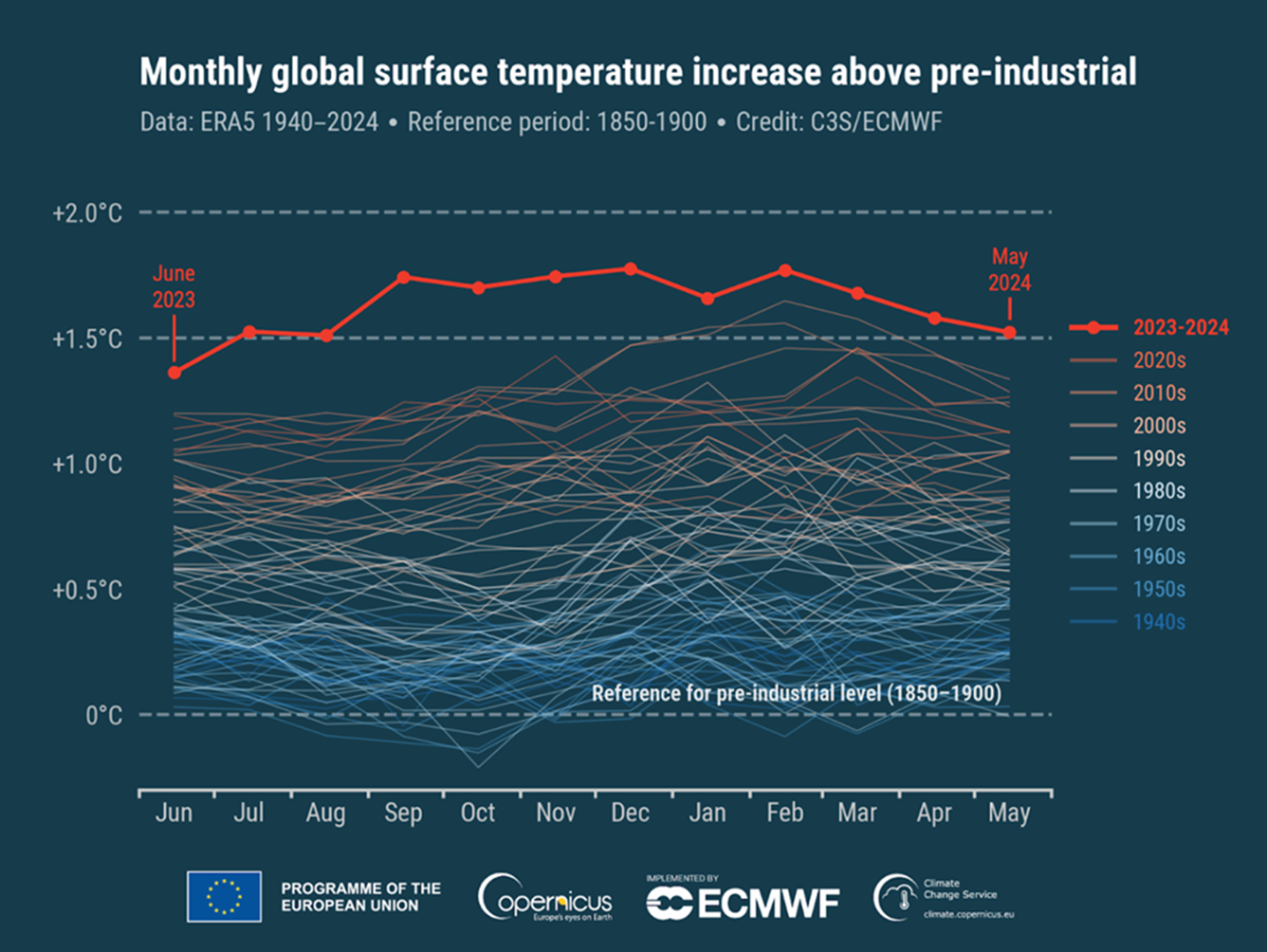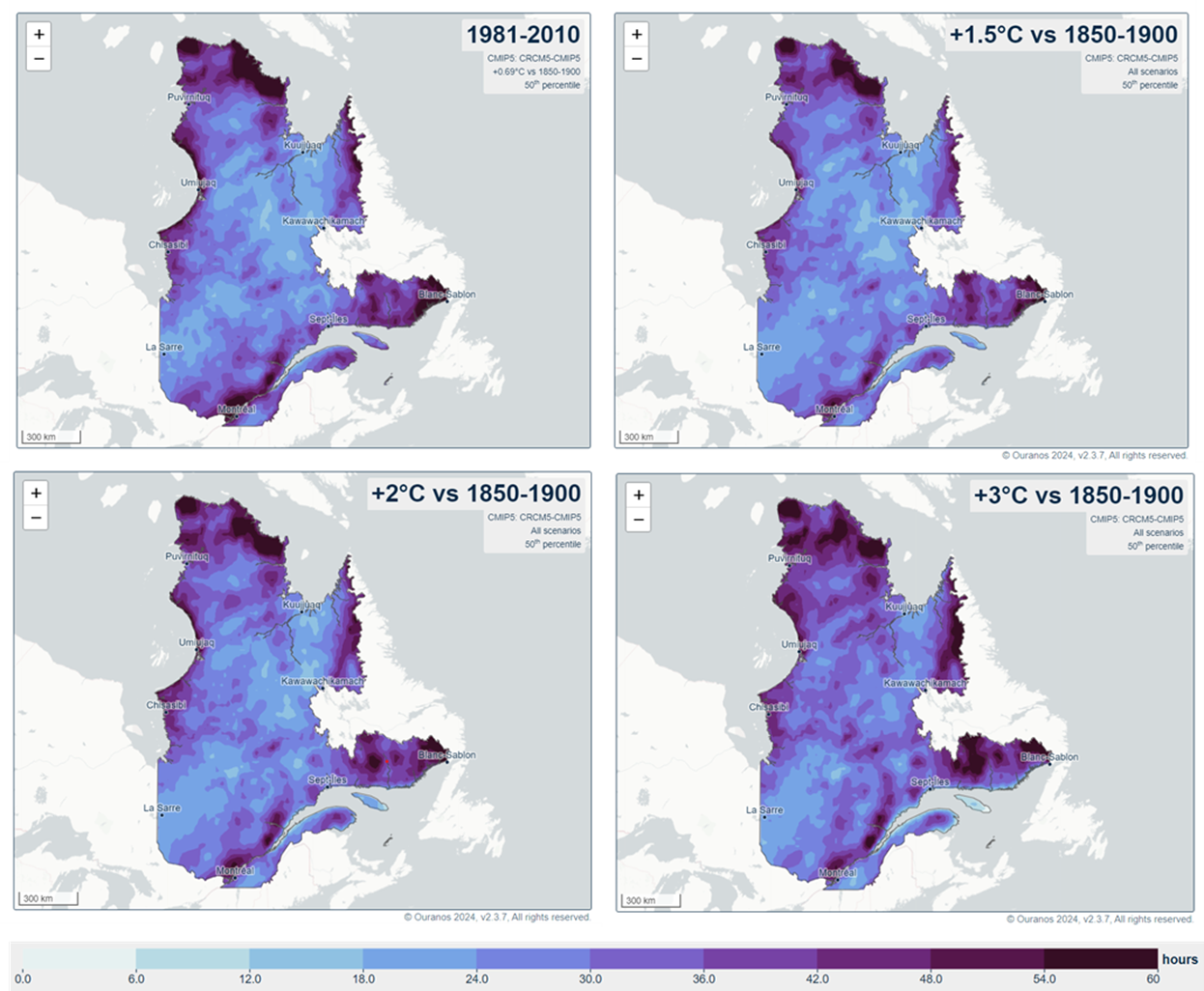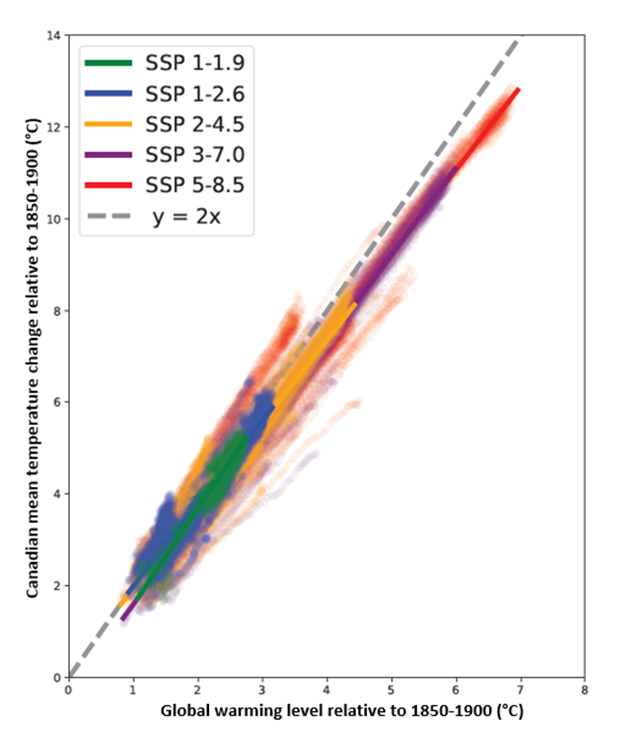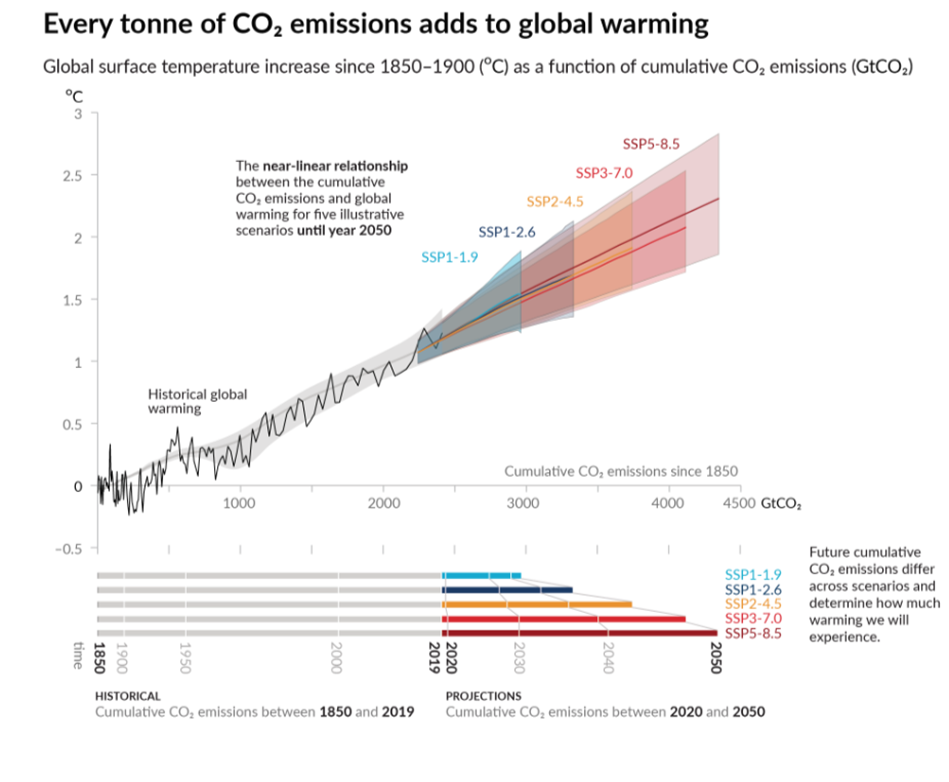What are levels of global warming?
Global warming levels (GWLs) offer a relatively new way to look at and communicate future climate change. In this approach, the regional climate change response is shown relative to the average global warming (e.g., 0.5°C, 1.0°C, 1.5°C, 2.0°C) above a specified baseline period, typically pre-industrial (1850-1900).
GWLs may already be familiar to some readers as they are often used in the media to track how current average temperatures compare to the pre-industrial baseline. For example, the Copernicus Climate Change Service regularly provides updates on monthly global temperature increases, with the most recent showing how observed climate has already exceeded the 1.5°C GWL in individual months (Figure 1). However, this type of analysis uses monthly averages for a particular year and is strongly influenced by natural climate variability.
In the GWL approach described here, long-term average global mean temperature change (typically calculated over 20 or 30 years) is compared to regional climate changes averaged over the same period. Using longer averaging periods means that the global temperature change is less influenced by natural climate variability and exhibits a smoother trend over time thus making it easier to identify when a particular GWL is reached. This is the approach used in the Intergovernmental Panel on Climate Change (IPCC) Sixth Assessment Report to characterize projections of climate means and extremes, as well as climate impacts. It was also used in the Pacific Climate Impacts Consortium’s Design Value Explorer, and to present projections of freezing rain in Ouranos’s Climate Portraits (Figure 2). On ClimateData.ca, GWLs are used in the Fire Weather Projections App and the Future Building Design Value Summaries.
The main climate projections available on ClimateData.ca are shown by greenhouse gas emissions scenarios as time series plots and as maps which can be viewed for a particular time period. An example of this is shown in Figure 3, where a typical graph from ClimateData.ca shows the number of days with maximum temperature > 25°C over time for Regina, Saskatchewan (SK), according to each of three different emissions scenarios.
In the GWL approach, however, regional changes in a particular climate variable or index are shown in relation to the change in global average (mean) temperature rather than according to different emissions scenarios over time. This means that instead of illustrating what the range in magnitude of climate change is for the 2050s, for example, this approach instead shows what climate change is expected in Canada (or a subregion) when global warming reaches, say, 2°C. This type of analysis should be complemented, then, with information about when the particular GWL will be reached, which is dependent on future emissions.
Figure 4 illustrates the relationship between annual average temperature changes for Canada and the globe, showing that Canada as a whole warms approximately twice as much (or as rapidly) as the global average. This means that for every 1°C increase in global average annual temperature, Canada’s average annual temperature increases by about 2°C. However, this approach does not provide information on the timing of when a particular level of global warming will occur. For more in depth information about the timing of GWLs, see More About Global Warming Levels.
Regional changes in extreme temperatures and precipitation have been shown to scale robustly across emissions scenarios1 and these changes are almost linearly related to global average temperature change. As the global temperature rises, regional temperature extremes and heavy rainfall events tend to increase, a pattern that remains consistent across different emissions scenarios. This is also the case for other climate variables including mean temperature, which is illustrated in Figures 4 and 5. These figures illustrate that the regional warming at a given level of global warming is similar regardless of when that global warming occurs in a particular emissions scenario’s trajectory. Figure 4 compares annual mean temperature change at Canadian and global scales for five SSP emissions scenarios, while Figure 5 illustrates the almost identical regional-scale warming at different GWLs under four SSP emissions pathways used by the CMIP6 model ensemble. Research has demonstrated that these findings are valid for a number of other climate variables,5,6,7 and also that the relationship between global warming level and regional changes in extremes may not necessarily be linear. For example, while the magnitude and frequency of less extreme regional heat events show a linear change with global warming, the frequency of rarer events, such as events with a 50-year return period, shows more of an exponential relationship with GWLs5. For example, at the global scale, such events are projected to become about 9, 14 and 40 times more frequent at GWLs of 1.5°C, 2.0°C and 4°C, respectively. In addition, the GWL approach does not tend to work well with variables which exhibit a substantial delay in their response to global temperature increase, e.g., sea level rise and glacial melt.
The regional spatial scale at which the relationship with GWLs is calculated also plays a role in determining the robustness of that relationship. In general, when changes to a particular climate variable or index are averaged over larger regions, there tends to be a clearer relationship with GWL because the averaging process reduces the influence of natural climate variability. Over smaller regions, the influence of natural climate variability is stronger and, as a result, the data appear noisier and the relationship between regional and global change is not necessarily as apparent. However, plotting global- versus regional-scale changes is a straightforward method for identifying robust relationships.







